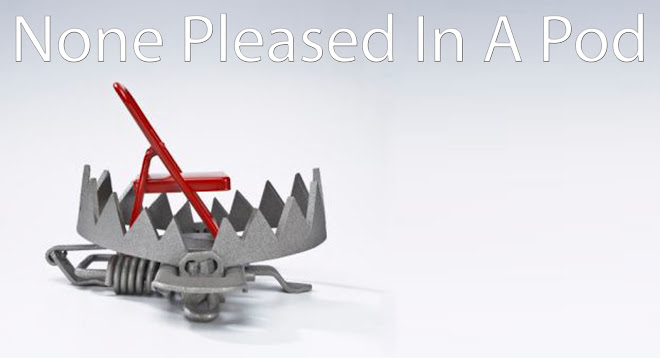The Flytrap is actually only one of 630 species of Carnivorous plants, these are plants that derive some or most of their nutrients from trapping and consuming animals or protozoans, typically insects and other arthropods. These plants are typically found in areas where there are poor levels of nutrients in the soil so these plants have evolved to survive. There are five trapping mechanism that these plants have evolved to perform, they are the Pitfall trap, Flypaper trap, Snap trap, Bladder trap and Lobster-pot trap

The Pitfall trap works in a very simple way, they trap prey in a rolled leaf that contains a pool of digestive enzymes or bacteria. These plants live in area of high rainfall in South America and consequently have a problem ensuring their pitchers do not overflow. To counteract this problem, natural selection has favoured the evolution of an overflow similar to that of a sink - a small gap in the zipped-up leaf margins allows excess water to flow out of the pitcher
The Flypaper trap works by simply getting the insect pray to stick to

the leaves. The leaf of the flypaper trap is studded with mucilage-secreting glands, which are short and nondescript. Once trapped the blade leaf rolls (to prevent rain from splashing the prey off the leaf surface) or dishing of the surface under the prey to form a shallow digestive pit
The Snap trap is characterised by the famous Venus Flytrap. Its trapping mechanism has also been described as a Mouse trap or Man trap based on their shape or rapid movement. Each trap has two lobes that are hinged along the midrib. Trigger hairs on these lobes are sensitive to touch. When a trigger hair is bent, stretch-gated ion channels in the membranes of cells at

the base of the trigger hair open, generating a an action potential that propagates to cells in the midrib. These cells respond by pumping out ions, which may either cause water to follow by osmosis or rapid acid growth. Changes in the shape of cells in the midrib allow the lobes, held under tension, to snap shut, flipping rapidly from convex to concave and interring the prey. This process takes less than a second! Once sealed the lobes act as walls of a stomach in which digestion occurs over a period of one to two weeks. Leaves can be reused three or four times before they becomes unresponsive to stimulation
The Bladder trap works by the plant creating a partial vacuum inside the bladder by it pumping ions out of the interior. The bladder has a small opening, sealed by a hinged door. Aquatic invertebrates such as Daphnia touch hairs on the leaves and deform the door by lever action, releasing the vacuum. The invertebrate is sucked into the bladder, where it is digested
Finally a Lobster-pot trap is a chamber that is easy to enter, and whose exit

is either difficult to find or obstructed by inward-pointing bristles. A Y-shaped modified leaf allows prey to enter but not exit. Inward-pointing hairs force the prey to move in a particular direction. Prey entering the spiral entrance that coils around the upper two arms of the Y are forced to move inexorably towards a stomach in the lower arm of the Y, where they are digested. Prey movement is also thought to be encouraged by water movement through the trap, produced in a similar way to the vacuum in bladder traps, and probably evolutionarily related to it. Above is a sketch of an actual trap made to catch lobster, as you can see the design is heavily inspired by this plant mechanism and is probably the source for the plants name
I really like this idea of a hidden mechanism to trap your prey and how it ties in to my title Weapon


No comments:
Post a Comment